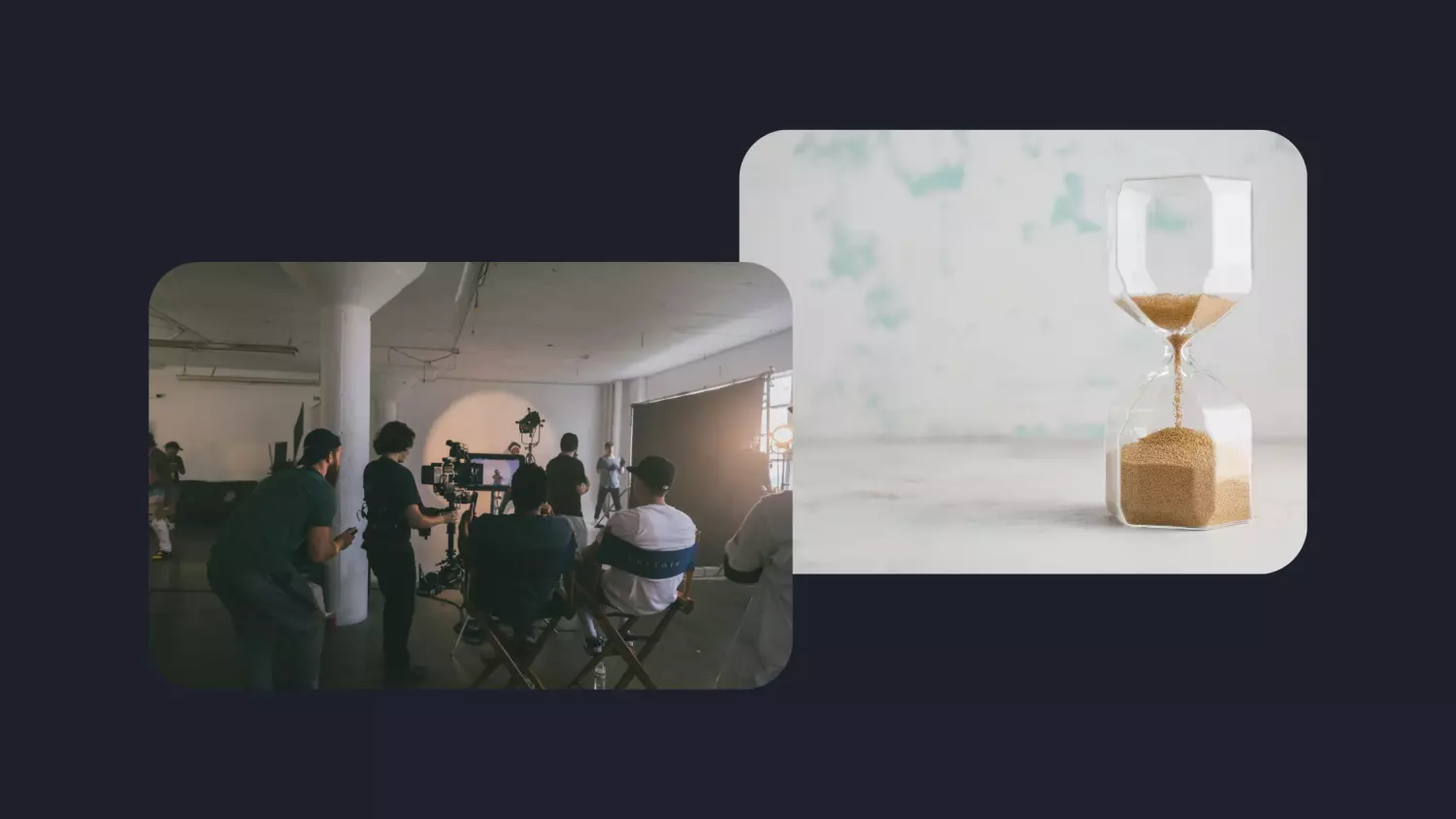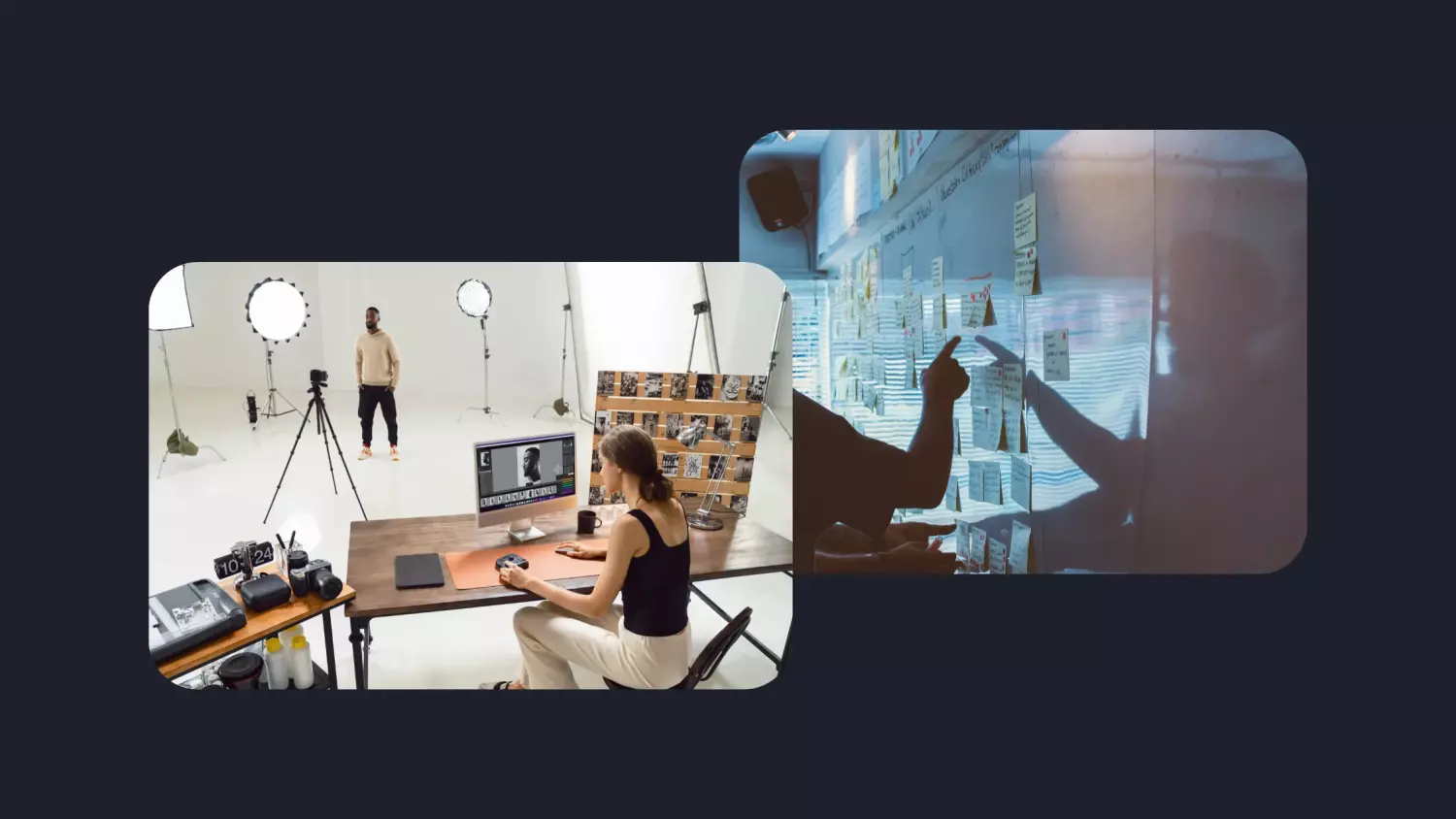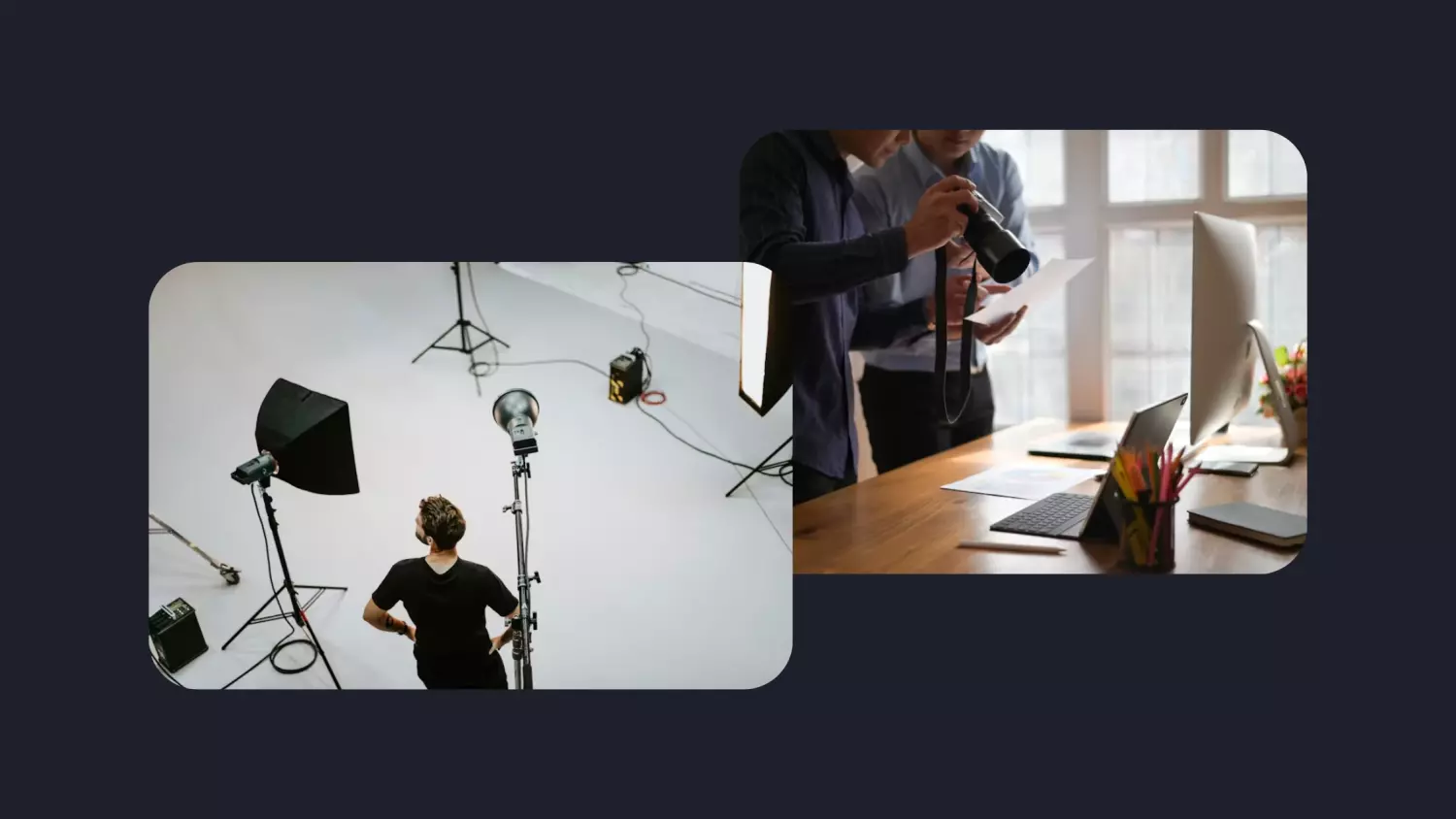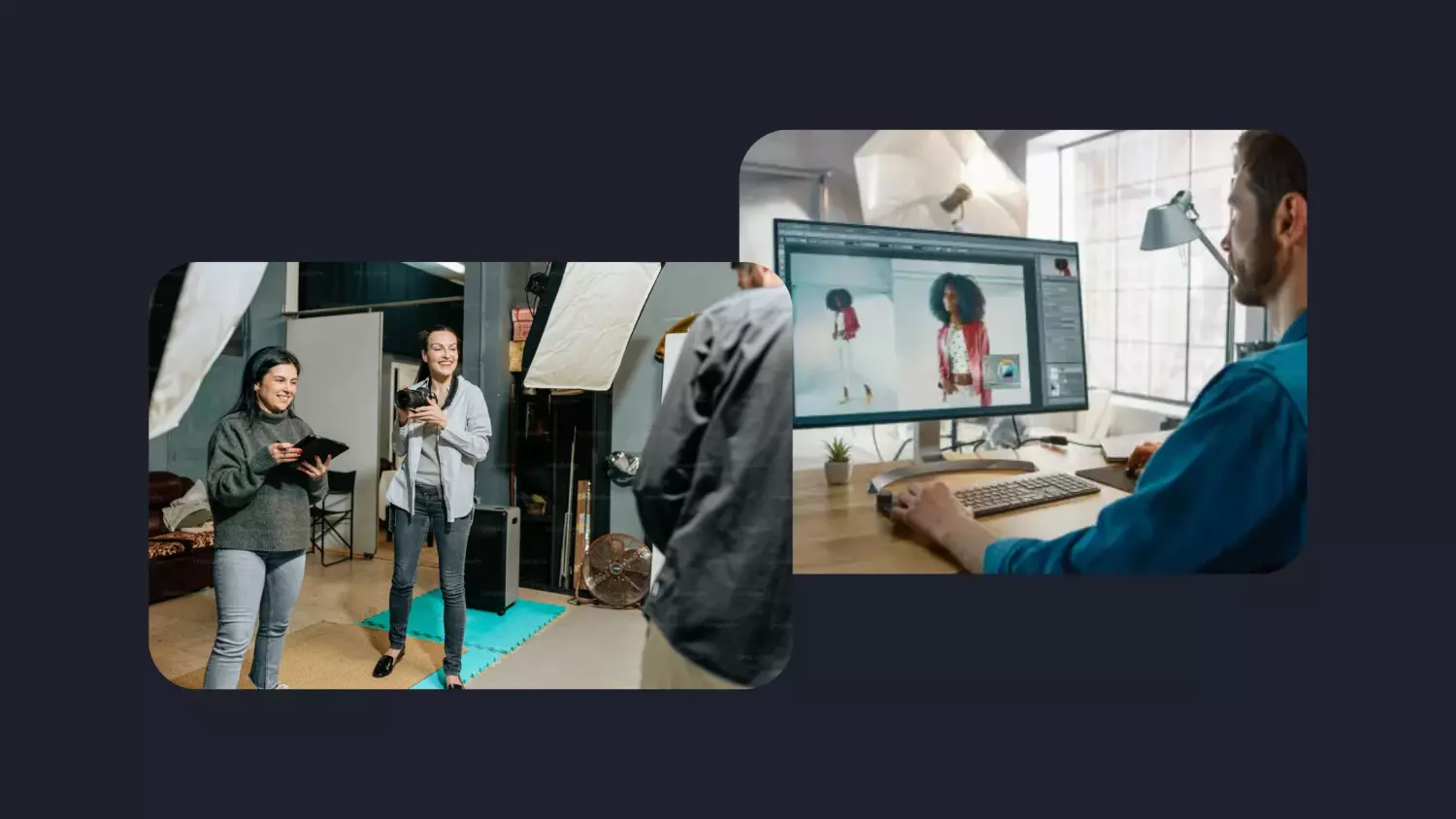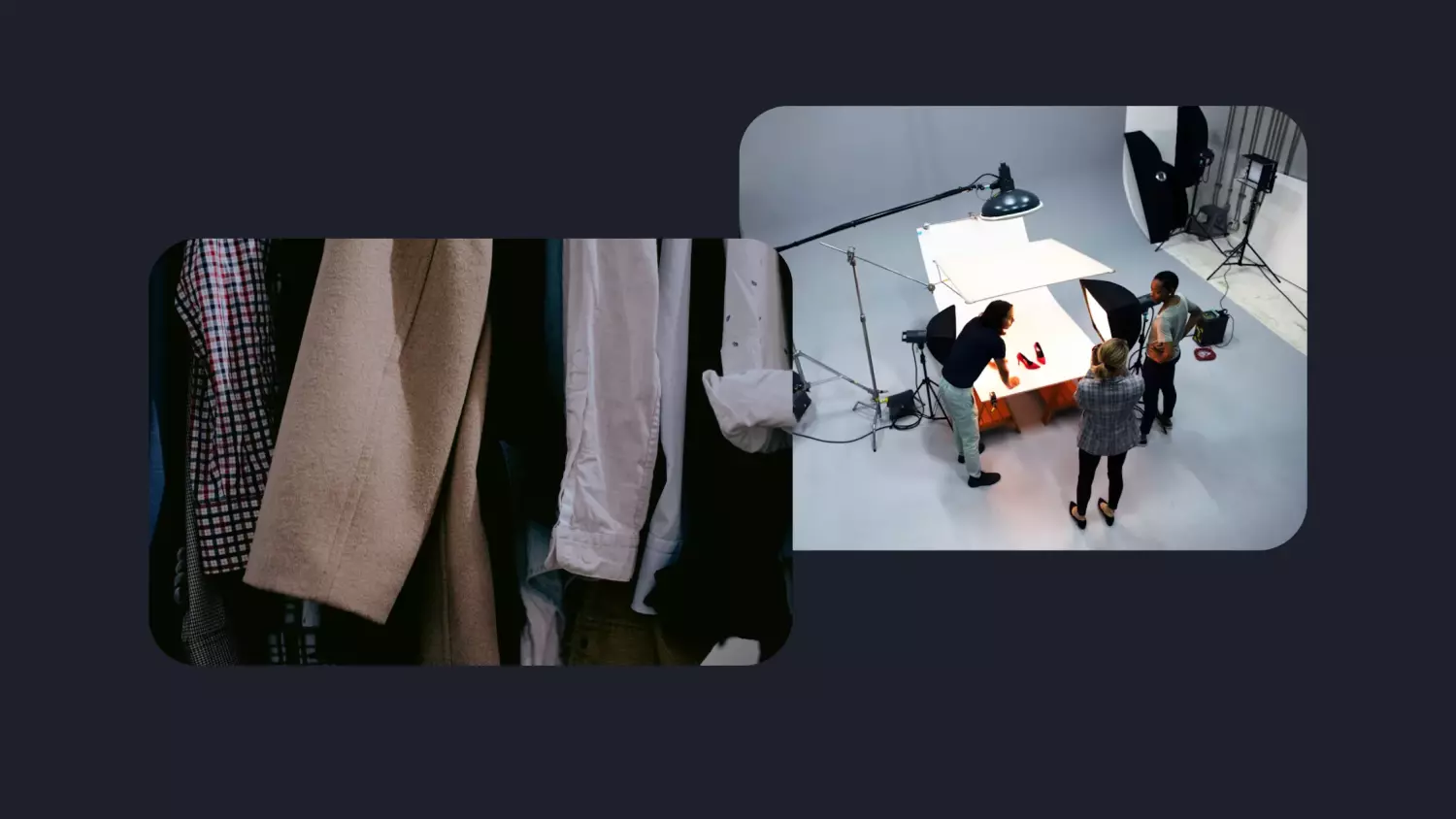High-volume content production is exciting, fast-paced, and often unpredictable.
When you’re producing content across multiple products, categories, and sales channels, the pressure on your studio operations multiplies. Suddenly, you’re not just managing creative output. You’re balancing shoot schedules, sample logistics, freelance talent, budgets, and resource availability—all at once.
In this kind of environment, guesswork isn’t scalable.
That’s why budgeting and resource planning go beyond finance and administration. They impact daily operations, affect creative output, and influence how customers experience your brand.
How to strengthen your studio’s budgeting and resource management
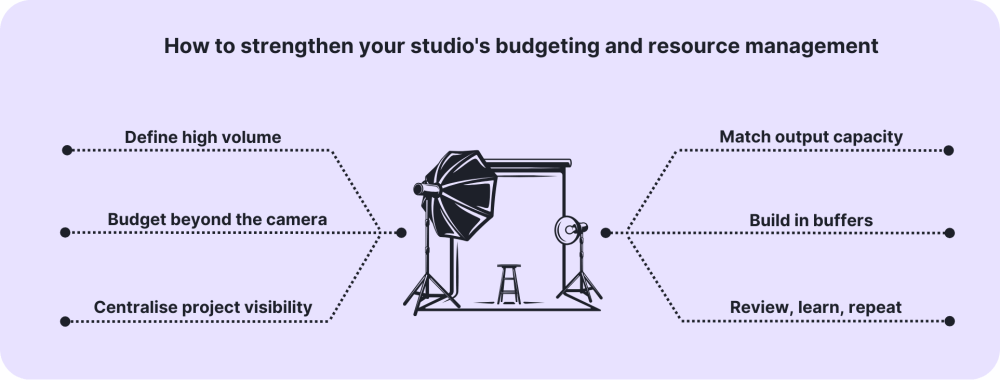
1. Define high volume
High volume doesn’t have a universal definition. For one brand, it might mean weekly e-commerce shoots across hundreds of SKUs. For another, it could involve managing multiple campaigns, editorial shoots, and social-first content—all at once. The point isn’t how much you’re producing but rather the complexity that comes with it.
Because when volume increases due to scale, speed, or content variety, the pressure builds on:
- Time
- Budget
- Resources
- Turnaround
And that’s exactly why understanding your version of “high volume” is key. It helps you plan smarter, allocate better, and avoid the cracks that start to show when you’re working at capacity.
2. Match output capacity
A common mistake in fast-moving production environments is setting delivery expectations without fully accounting for what the team can realistically support.
Before locking in campaign calendars or sales deadlines, ask:
- How many assets need to be produced?
- Across how many sets or locations?
- By when—and for which channels?
- Do we have the right talent (photographers, stylists, assistants, editors) available?
This is where resource planning becomes essential. Matching deliverables to team bandwidth ensures that quality doesn’t get compromised in the race to hit volume targets.
3. Budget beyond the camera
Production isn’t just what happens on set. The real cost is in the end-to-end workflow.
Beyond photographers and studio rental, you’re budgeting for:
- Pre-production (creative briefs, mood boards, casting)
- Sample management
- Post-production (retouching, colour matching, file naming)
- Tech tools management platforms
- Project management time
When planning for high volume, don’t just account for the shoot—account for everything around it.
4. Build in buffers
Delays happen. Samples don’t show up. Models cancel. A stakeholder wants reshoots.
Studios that thrive under pressure know this and plan for the unexpected:
- Allocate contingency budgets
- Build buffer days into the shoot calendar
- Keep a shortlist of backup freelancers or talent
- Use modular shoot plans to quickly reassign resources if needed
Smart planning isn’t rigid. It’s flexible, resilient and built to support momentum when things shift.
5. Centralise project visibility
When you’re managing multiple overlapping projects, it’s easy to lose sight of what’s happening where—and when.
That’s why centralised tracking is so valuable. You need a system where you can:
- See who’s booked and when
- Understand shoot costs in real-time
- Track actuals vs. planned budgets by project
- View sample readiness, set availability, and post-production timelines
- Pull reports for leadership or finance in seconds
Without central visibility, every decision takes longer, and every delay ripples further.
6. Review, learn, repeat
Budgeting and resourcing are living processes. They need to evolve as your content strategy does.
After each project or quarter, ask:
- Did we stay within budget? If not, why?
- Were any resources overbooked or underutilised?
- Were there any shoot types that consistently ran over?
- What could be automated or streamlined next time?
Use what you learn to refine your forecasting, improve future planning, and reduce stress on your teams.
Bringing clarity to cost and capacity with Lets Flo
With its budgeting and resource planning, Lets Flo allows creative teams to allocate shoot costs, book resources, sync schedules, and track actuals against estimates—all in one centralised platform. Lets Flo ensures your team has real-time visibility into what’s happening, who’s working, and how much it’s costing.
The platform auto-syncs calendar events, prevents double-booking, handles cost-per-image calculations, and supports project-based budgeting with permissioned access. It’s the clarity and control every high-volume studio needs.
High-volume content production is a team sport and the strongest teams are the ones that plan, pivot fast, and protect their time and money.
Take control of your studio’s time and budget—see how Lets Flo can help.
Book a demo
